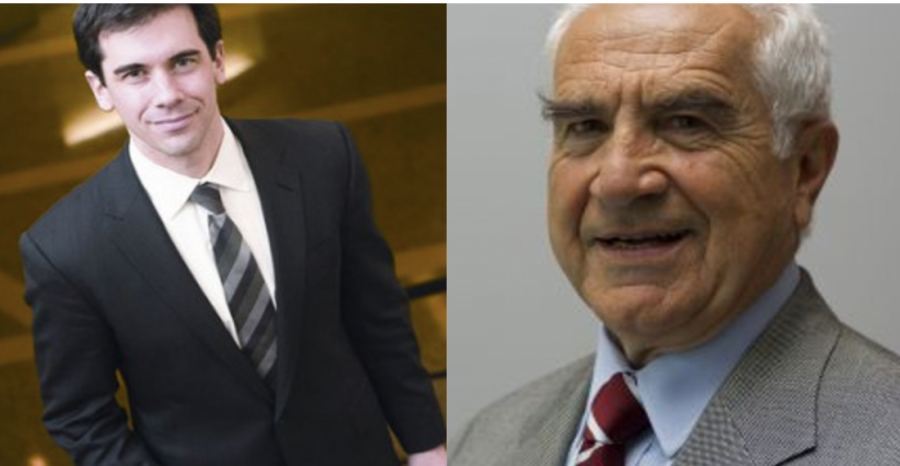Professors: Landlords Must Pay MTA
NYU Tandon School of Engineering Professors Constantine Kontokosta (left) and Giancarlo Falcocchio (right) argue that the MTA restorations should be paid by landlords who profit from near subway stations.
November 27, 2017
The New York City subway system was riddled with emergency repairs, train delays and system malfunctions this summer. To fix the subway system, Mayor Bill de Blasio plans to tax the rich to pay for repairs, but Governor Andrew Cuomo prefers to make the drivers pay to drive through the city’s most congested parts.
NYU Tandon School of Engineering Professors Giancarlo Falcocchio and Constantine Kontokosta estimated that there is a better way to pay the transit repairs. They calculated how much landlords benefit financially from their proximity to the subway system in order to argue that building owners who attract business from the Metropolitan Transportation Authority should help pay for the maintenance of transportation.
“We find that what owners of high rise commercial buildings contribute [to the MTA] does not equate to the benefits they receive from a reliable subway service,” Falcocchio said. “But they should.”
This claim was also made by former MTA executive Michael Horodniceanu who argued that commercial real estate could play a bigger role in contributing to the repairs and maintenance fund of the MTA at a transit conference called Fixing Mass Transit on Oct. 23.
Falcocchio said that he and Kontokosta conducted an analytical study of exactly how New York City landlords might have quantitatively benefited from the MTA which they presented at the Urban Design Forum on Sept. 6.
“[The interpretation of the study’s results is] based on the equity principle that those who benefit from subway service should contribute their fair share — as subway passengers and bridge or tunnel users do — toward its annual operating and maintenance,” Falcocchio said.
Falcocchio also said that he was motivated to start this research project because the MTA’s resources and revenue do not adequately cover the cost of sustaining and improving the subway system.
Per the team’s analysis, there are more than 664 million square feet of commercial and industrial space within a quarter mile of a subway or rail station below 60th street in Manhattan. In 2016, the MTA spent roughly $2.6 billion to provide these areas with mass transit service.
To continue their studies, Falcocchio said that the team hopes to investigate the merits and mechanism of creating a dedicated Transit Maintenance Assessment fund, alongside New York City officials and other relevant stakeholders.
“We also expect NYU students to benefit from a more reliable subway service that will not make them late for class or other scheduled events,” Falcocchio said.
Correction Nov. 27
A previous version of this article which was published online and in our print edition on Monday, Nov. 27 said that Horodniceanu first made the claim that landlords should assist in paying for the MTA repairs, when in fact, the results of Falcocchio and Kontokosta’s study was presented at the Urban Design Forum on Sept. 6, which was 47 days before Horodniceanu made the same argument at the “Fixing Mass Transit” conference of Oct. 23.
A version of this article appeared in the Monday, Nov. 27 print edition. Email Christine Lee at [email protected].












































































































































